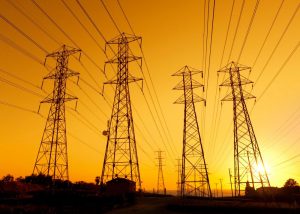How demand flexibility could unlock the renewable age
Using more electricity at times when wind and solar power are plentiful will help to improve energy affordability and security.

Australia’s electricity systems are having to cope with far greater variations in energy supply as new wind and solar farms are connected to the grid, and millions of households install rooftop panels.
Output from wind farms and solar farms can fluctuate with the time of day and with changes in the weather. There are now regular gluts of cheap solar supply during the day, when the sun is shining, but zero when night falls. Unfortunately, demand for power tends to peak during the evening, not during the day.
The mismatch between supply and demand at different times of day is one of the major challenges of our future electricity system.
When supply is much higher than demand, consumers with rooftop solar and renewable generators have been unable to export their full capacity, and have faced curtailments.
And when demand outstrips supply, it can threaten the system’s reliability and stability.

In extreme conditions, such as a summer heatwave or the current energy crisis where higher than average demand for heating has combined with skyrocketing gas prices and coal plants being offline, this can lead to shortfalls and load-shedding events.
Neither solution is desirable for a future, reliable, zero-emissions electricity supply. Nor is switching off oversupply of cheap solar during the day.
A better solution might be to shift electricity demand to match peaks in supply during the day.
What if demand for energy could be better matched to coincide with the times when renewable electricity is cheap and abundant, when the sun is shining and the wind is blowing?
As well as saving on power bills, this supply-driven approach also offers a way to reduce emissions by avoiding the need for non-renewable generation.
To help understand how a more variable electricity network could function, ARENA is supporting projects demonstrating more flexible approaches to energy demand.
These include trials of programs managing the charging and discharging of batteries and electric vehicles, orchestrating consumer-owned energy devices, activating hydrogen electrolysers when energy is plentiful and cheap and undertaking more industrial processes onshore.
What about storage?
Storing more energy from times of plentiful generation will help to balance fluctuations in supply and demand, but technologies like batteries and pumped hydro cannot economically compensate for all variability.
So, looking to a future where renewables contribute more of our energy, there is a need for new ways to balance the grid.
For instance, timing the production of renewable hydrogen and other energy intensive processes like metal refining, water heating, refrigeration and manufacturing to take advantage of lower prices and reduce exposure to peak pricing periods.
There are also opportunities to slow or altogether stop these processes when generation falls and supplies tighten.
Managing this more flexible approach will require new approaches such as new automated technologies that respond to signals from the grid, and, importantly, market reforms to incentivise the use of energy at strategic times.
ARENA Knowledge Sharing Manager Caitlin Sears said there is work ahead to break down barriers holding energy users back from playing a more active role in the energy system.
“To unlock the savings afforded by demand flexibility, it is important that Australia addresses any inefficient barriers to demand-side participation. ARENA is doing this by supporting projects that effectively integrate and orchestrate novel sources of flexible demand, including managed charging of electric vehicles, flexible operation of hydrogen electrolysers, and other load shifting technologies in industrial, commercial and residential settings.”
Sears noted a number of market reforms are underway to help unlock these savings, including “flexible trading relationships”, and more cost-reflective network tariffs for importing and exporting electricity from customer premises.
In the short-term, Sears also flagged consumer loads such as use of domestic appliances, water heaters, pool pumps, batteries and air conditioners can be moved to make better use of abundant daytime solar.
Lower costs and emissions
To understand the value load flexibility could offer across the National Electricity Market, ARENA engaged NERA Economic Consulting and Energy Synapse to work with key stakeholders to answer the simple question: how big is the economic opportunity for load flexibility during the energy transition.
With input from ARENA, the Australian Energy Market Commission (AEMC), the Australian Energy Market Operator (AEMO), the Australian Energy Regulator (AER) and the Energy Security Board (ESB), the Load Flexibility Study aims to guide demand side participation across major sectors.
The study focused on a number of opportunities, including:
- large-scale hydrogen electrolysis
- electrification of metals and minerals processing
- smart controls for commercial buildings
- electric vehicles
- behind-the-meter solar and battery storage
- orchestrated energy consumer devices.
NERA found the greatest value came from shifting loads where end users are somewhat indifferent about the timing of energy usage, including charging of electric vehicles and behind-the-meter batteries.
In comparison, winding down industrial loads would be more challenging and expensive, even when the processes have high ‘technical potential’.
However, the savings could be significant. A baseline model, applying minimal demand flexibility identified savings in system costs of $1 billion.
This grew to $8 billion in a world with a high uptake of electric vehicles, electrified industrial and residential heat processes, and a high penetration of renewables.
Consumer savings rose to $18 billion in this latter scenario when considering the ability of consumer-owned resources to mitigate market power effects and windfall gains to generators.
Flexible hydrogen production was found to offer the biggest benefits by reducing demand for the energy intensive process when electricity prices are highest.
Overall, the study found that in more ambitious electrification and renewable energy scenarios, total costs to consumers would be significantly lower with load flexibility.
NERA Consulting’s full report is available here.
LIKE THIS STORY? SIGN UP TO OUR NEWSLETTER

ARENA